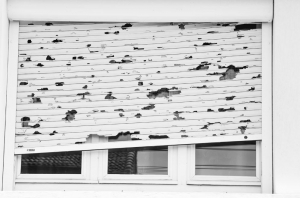Texas is known for its wide-open roads, bustling cities, and unpredictable weather. From the sunny skies of Austin to the dry heat of El Paso, the Lone Star State has seen it all. But sometimes, nature strikes in ways even Texans can't prepare for.
A massive winter storm rolled through Texas in early February, causing chaos on highways across the state. Though several areas were affected, one crash stood out due to its sheer scale and devastation: a deadly pileup on I-35W in Fort Worth. As snow and ice blanketed the Dallas-Fort Worth metroplex, drivers found themselves trapped in a disaster no one saw coming.
After such a tragic event, many victims and their families face not only physical and emotional trauma but also financial hardship. In the aftermath of such a tragic accident, many victims wonder how to protect their rights and get justice. Consulting a legal expert can be crucial in helping you receive maximum compensation for your losses and cover medical bills, lost wages, and other damages caused by the crash.
What caused the crash on I-35W?
That particular stretch of I-35W was covered with a thin sheet of ice, the result of freezing rain that had begun the night before. The conditions were deceptively dangerous. Vehicles were moving at high speeds when a FedEx 18-wheeler lost control while descending a slope. The semi-truck slammed into a concrete barrier and plowed into several cars ahead, triggering a deadly chain-reaction crash.
This catastrophic event involved at least 133 vehicles, including more than a dozen other 18-wheelers. The crash site stretched for over 1.5 miles. Fort Worth authorities officially declared it a “mass casualty event.” Tragically, six people lost their lives, and dozens were injured. The crash shut down all northbound lanes of I-35W and its toll lanes, causing gridlock from Interstate 30 to Interstate 820.
Was the Crash Preventable?
Before the crash, the Fort Worth area experienced 36 continuous hours of sub-freezing temperatures. North Tarrant Express Mobility Partners Segments 3 (NTEMP S3), the private contractor responsible for managing this portion of I-35W, had pretreated two southbound toll lanes with a brine solution 44 hours before the collision.
Even though signs warned drivers with the message "ICY CONDITIONS EXIST / PLEASE USE CAUTION," the steps taken to keep the road safe weren't enough. On February 11, light mist and fog started forming as early as 1:34 a.m., making the roads even more slippery. Still, no extra de-icing was done before the crash happened around 6 a.m.
What Did the Investigation Reveal?
According to the National Transportation Safety Board (NTSB), the elevated roadway's surface was dangerously icy, causing vehicles to slide uncontrollably.
- Although NTEMP S3's initial brine treatment was deemed reasonable, their monitoring systems fell short, as they failed to detect the elevated portion of I-35 that requires additional de-icing.
- The absence of environmental sensor stations in the crash zone meant critical data was missing, data that could have triggered additional de-icing.
- Further, the training given to NTEMP S3 personnel was found lacking in preparation for such extreme weather. The NTSB recommended better coordination between TxDOT and private contractors, improved training, and the installation of technologies like variable speed limit signs, safety cameras, and connected vehicle systems to prevent future tragedies.
In the end, the NTSB determined the root cause to be the accumulation of ice on the elevated roadway, which led to the massive loss of vehicle control and the resulting chain-reaction crash.
Conclusion
If you were injured or lost a loved one in the I-35W crash, you may be entitled to significant compensation to cover medical bills, lost income, pain and suffering, and more. In some cases, victims may receive tens or even hundreds of thousands of dollars, depending on the severity of the injuries and the impact on their lives. Seeking legal advice is the best way to understand your rights and to receive the maximum compensation for your losses.






